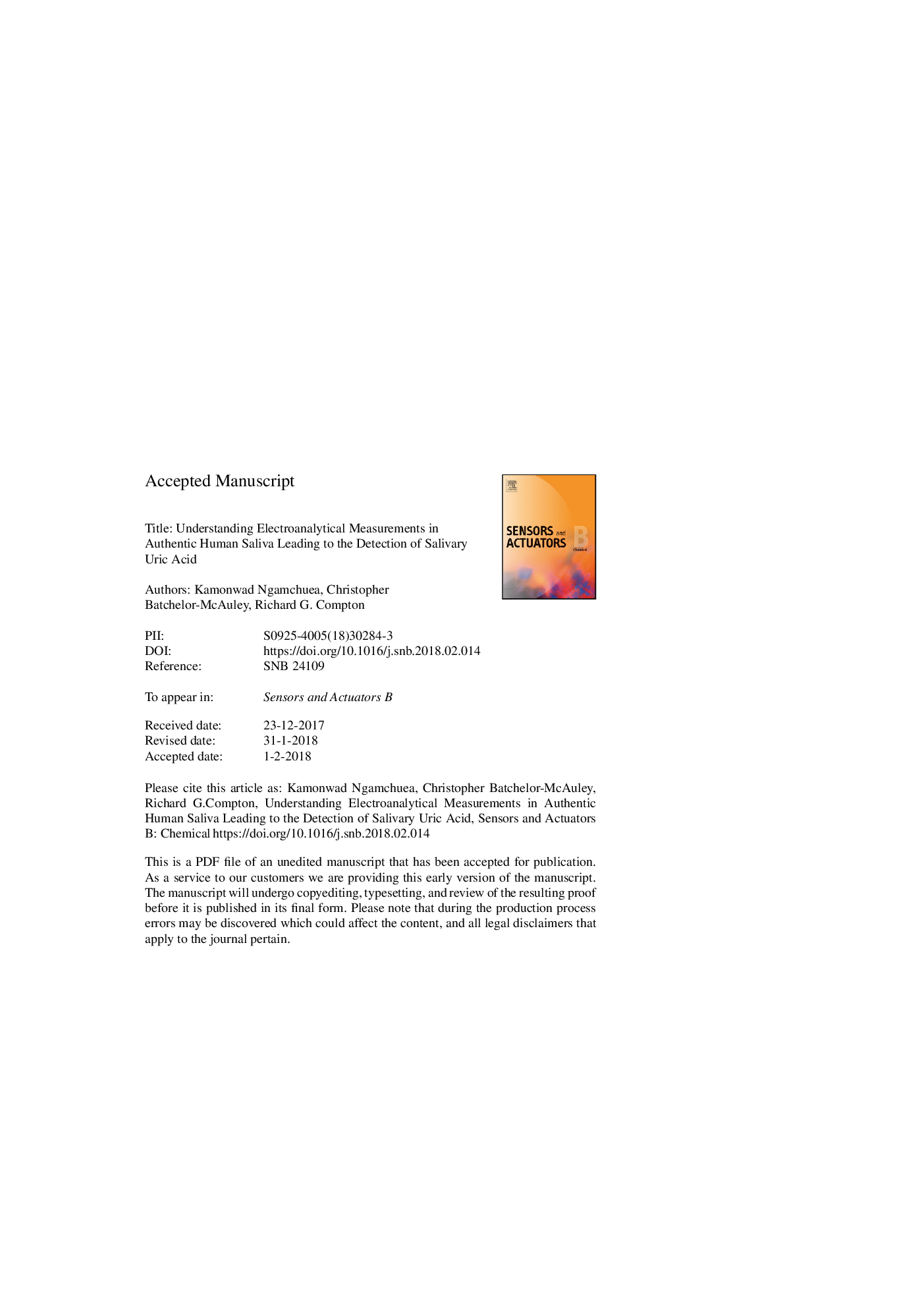| Article ID | Journal | Published Year | Pages | File Type |
|---|---|---|---|---|
| 7140590 | Sensors and Actuators B: Chemical | 2018 | 21 Pages |
Abstract
The electroanalytical responses of several redox-active species are investigated in authentic human whole saliva. First, we show that ferrocenemethanol (FcCH2OH) and ferrocyanide ([Fe(CN)6]4â) display well-defined voltammetry in undiluted saliva at a carbon microdisc electrode without the addition of supporting electrolyte. Second, we demonstrate that dissolved oxygen is detectable in saliva. The ferrocenemethanol oxidation is shown not to be altered by the medium apart from the steady-state currents which change according to the viscosity of the solvent. In contrast, the voltammetry of ferrocyanide oxidation and oxygen reduction in authentic saliva are significantly different from those in synthetic saliva or aqueous electrolyte. It is demonstrated that the electrode is partially blocked by organic molecules or other electrochemically inert species when placed in authentic saliva samples. The distortion in voltammetry thus reflects the different surface sensitivity of the two processes. Ohmic drop is proved to be minimal at microelectrodes even without added electrolyte. Microelectrodes are thus suitable for use in electrochemical analysis of saliva samples. Finally, we demonstrate that uric acid which is a potential biomarker for gout, oral cavity cancer and other several diseases can be directly detected in authentic saliva at a carbon microelectrode with the interference of ascorbic acid and dopamine of no more than 10%.
Related Topics
Physical Sciences and Engineering
Chemistry
Analytical Chemistry
Authors
Kamonwad Ngamchuea, Christopher Batchelor-McAuley, Richard G. Compton,
